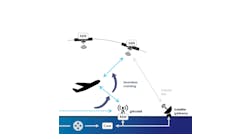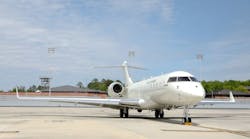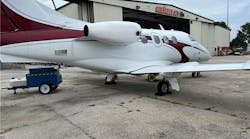Human Factors
Error Prevention Communication is key
By Richard Komarniski
October 2004
After attending several aviation conferences this summer, I realized that the aviation industry is embarking on a new era. The recent setbacks we have experienced have forced us to regroup, become lean, and ready for business.
The industry we once knew was changed forever after Sept. 11, 2001 and we have to be prepared for a new paradigm shift. Whether our industry leaders are involved in new airlines, established airlines, repair stations, or overhaul shops, they are opening their doors to a new generation of both aircraft and technicians.
As John Goglia, former NTSB member and a licensed aviation maintenance technician, mentioned in his opening remarks at the PAMA Conference, 'we have to be prepared to communicate.' We cannot be complacent and just hope for the best.
Representatives from both repair stations and airlines are excited about new growth and new hires that are coming down the pipeline. It is great to finally see this level of excitement in our industry, but as we grow, we have to remember to sit back and reflect on our policies, procedures, and training programs to ensure we are well prepared for the pending changes.
Training and communication crucial
Classic case studies of aviation accidents have shown us that although
it is nice to be growing and hiring, procedures and training programs
are crucial for a successful transition from a small staff of 12 to
30 people to an organization of 300 to 400 employees. Nearly everything
needs to change. We must look at ourselves and evaluate how effectively
we communicate with each other in our organizations before we hire
more people. The new hires conform to what they are exposed to and
the way that they are treated. Hiring new employees into a dysfunctional
organization helps to create dysfunctional employees. Hiring new
employees into an organization with effective communications helps
create employees who learn to communicate.
We all need to rethink how we are going to maintain the new generation of aircraft, regardless of whether they are built by Boeing, Airbus, Global, Gulfstream, Mustang, or Eclipse. Maintenance as we know it will not exist in four to six years. Are we getting prepared? I hope we are not waiting for the 145 Training Advisory Circular to figure out what training we need to give our own technicians. The writing is on the wall.
It is great to have growth, new technicians, and aircraft but are we thinking ahead when it comes to procedures, communications, and training? We will experience a new generation of aircraft and technicians ' get ready.
A major challenge facing many organizations is the need to pass on old school skills and positive work habits and attitudes to a new generation of technicians. Communication is crucial. It is the foundation for nearly everything we do, not just on the job but also throughout our daily lives.
Positive feedback = success
In organizations where technicians are encouraged, praised, listened
to, and held accountable for their work, we see successful companies.
Just because you or I only received feedback when we made a mistake,
do not think that this will work with the new generation of technicians
who need constant positive interaction. The new generation of technicians
wants feedback. In the highly competitive aviation industry where profit
margins on quoted repairs or maintenance, for example, are becoming
tighter, only organizations and managers who use every tool at their
disposal, including effective communications, will survive and be
profitable.
If you feel you just cannot find the time to hold or attend stand up maintenance meetings in the hangar for the supervisors and technicians, ask yourself 'How long can I go on making and missing silly errors that continue to haunt each project, overhaul, inspection, and refurbishment I do?' An analysis of performance before and after human factors awareness training has shown positive changes in employee attitudes and behaviors, turn backs, warranty claims, projects completed on or before schedule, and profitability.
Managers are the significant link between vice presidents and line staff; they must ensure proper communication of information. Do not let your managing style and personal habits become the missing link in the chain of communication. Communicate before, during, and after a project. Discuss what went right and what can be done better (notice I did not say wrong). Get everyone involved in a standup debrief. You will notice a remarkable change in employees when they know that they will be held accountable, praised publicly for efforts, and asked for their suggestions.
Discuss lessons learned
When we talk about communication, I do not mean discipline every time
we make an error. Communication comes when we debrief after a project
and incorporate everyone's input to make the next project go smoother.
Discussing lessons learned, even on a small scale, helps to reinforce
and share positive aspects of a project as well as to identify things
that did not go so smoothly. Get people involved, sit back, and listen
to what they have to say. When a suggestion is made, make sure that you
as a manager follow through and do not just let the suggestion go into
a black hole of inaction. Every suggestion is not possible to implement,
but work through them and provide feedback on the status of the suggestions.
We have a lot of bright people who work in our organizations. This in
turn creates employees who are motivated, safety conscious, and committed
to error prevention.
All accidents come back to lack of communication.
P.S. Way to go Midcoast in the PAMA Olympics ' Great job!
Richard Komarniski is president of Grey Owl Aviation
Consultants Inc. He has worked as an aircraft maintenance technician
since 1974 holding AME and A&P ratings. For information on human
factors training or assistance in setting up a MRM Program contact
Grey Owl Aviation Consultants Inc., (204) 848-7353, www.greyowl.com or [email protected].



